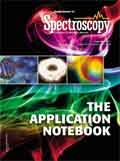Disinfection of Tetraselmis sp. with UV LED Application
Application Notebook
Analyzing the effect of UV LED modules on disinfecting ballast water using UV–vis spectroscopy.
Analyzing the effect of UV LED modules on disinfecting ballast water using UV–vis spectroscopy.
Ballast water is seawater that fills a ship to maintain its balance. Annually, about 10 billion tons of ballast water with organisms such as planktons, germs, and bacteria is being transported around the world, and they cause diseases and contamination of marine ecology. UV treatment has the advantage of having no remaining toxic and disinfection by products (DBPs). Selective monochromatic wavelengths can be applied in the UV. Besides this UV LED modules have a low power consumption rate and only a 10~100 (mA) applied current.
Therefore, UV LED modules were designed and fabricated to analyze the disinfection characteristics of UV LED with wavelengths of 255, 265, and 280 nm on phytoplankton such as Tetraselmis sp.
Experiments
Spectrum Analysis
To analyze the optical spectrum characteristics of the fabricated UV LED modules, a spectrometer (Avaspec-3648, Avantes) was used.

Figure 1: Avantes spectrum of the UV LED modules.
The UV LED modules that were used in the experiment showed peak wavelengths at 255, 265, and 280 nm and approximately 10 nm full widths at half maximum (FWHM). Because the UV LED had the characteristics of a monochromatic wavelength that does not show its spectrum in ranges except for those mentioned above, selective UV irradiation was possible (1).
The disinfection rates of the Tetraselmis sp. showed to be in accordance with the energy that was irradiated onto each UV LED module. The results show that the more the energy that was irradiated, the higher the disinfection rate was.
As a result, in the case of the Tetraselmis sp., the valid disinfection area was formed within the wavelength of the UV-C, and especially the highest disinfection rate occurred between 260 nm and 270 nm.

Figure 2: Shape of the Tetraselmis sp. before and after the UV treatment. While the Tetraselmis sp. clearly showed a round cell membrane before the UV treatment, the shape of the cell membrane was transformed after the UV treatment (2).
Experimental Results
Figure 2 shows the shape of the Tetraselmis sp. before and after the UV treatment. While the Tetraselmis sp. clearly showed a round cell membrane before the UV treatment, the shape of the cell membrane was transformed after the UV treatment (2).
References
(1) Li Xiaojuan and Chen Cunshe, WSEAS Transactions on computers 8(2), 237–247 (2009).
(2) Xiaoli Zhou, Muqing Liu, Yong Qian, Hui Wang, and Shaolong Zhu, WSEAS Transactions on electronics 5(12), 457–467 (2008).
Avantes
9769 W. 119th Dr., Suite 4, Broomfield, CO 80021
tel. (303) 410-8668 or (866) 678-4248, fax (303) 410-8669
Website: www.avantes.com

Thermo Fisher Scientists Highlight the Latest Advances in Process Monitoring with Raman Spectroscopy
April 1st 2025In this exclusive Spectroscopy interview, John Richmond and Tom Dearing of Thermo Fisher Scientific discuss the company’s Raman technology and the latest trends for process monitoring across various applications.
A Seamless Trace Elemental Analysis Prescription for Quality Pharmaceuticals
March 31st 2025Quality assurance and quality control (QA/QC) are essential in pharmaceutical manufacturing to ensure compliance with standards like United States Pharmacopoeia <232> and ICH Q3D, as well as FDA regulations. Reliable and user-friendly testing solutions help QA/QC labs deliver precise trace elemental analyses while meeting throughput demands and data security requirements.